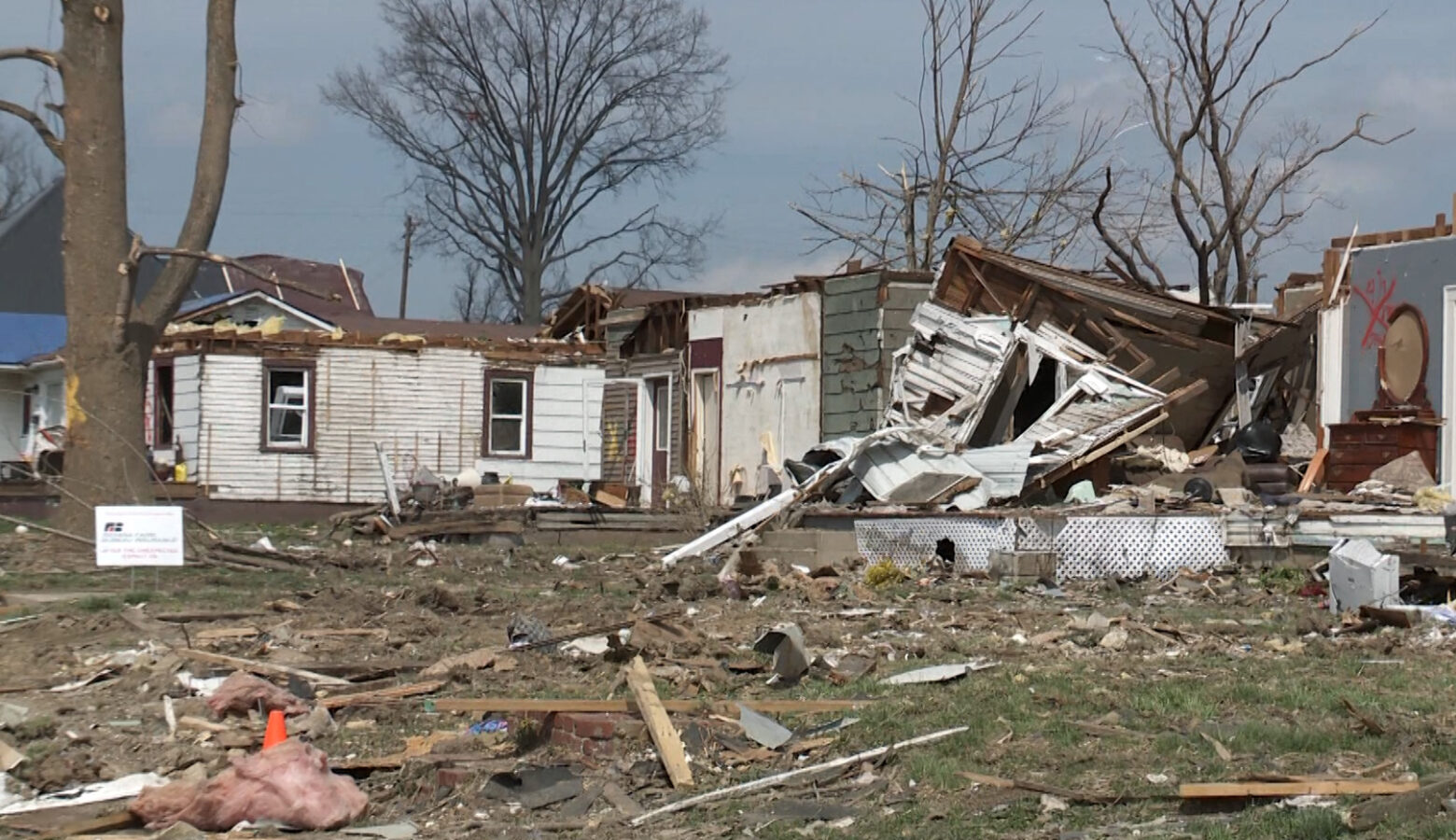Indiana may see more tornado outbreaks, variability in the future

Tornadoes are quick, local events — which makes them hard to study. Still, warmer global temperatures seem to be creating some trends.
Austin Pearson is a climatologist working for the Midwestern Regional Climate Center and the Indiana State Climate Office. He said we don’t seem to be getting more tornadoes overall, but there’s more variability from year to year.
On average, the U.S. gets more than 240 tornadoes from January to early April. This year, that number has nearly doubled.
Experts at Yale say, historically, nearly 80 percent of tornado deaths have been associated with these outbreaks.
Pearson said tornado outbreaks — or several tornadoes clustered together in a short amount of time — are also on the rise.
“Primarily due to the warmer temperatures, but also the storm systems that we have coming off the Rockies. So we get some of these larger events that happen,” he said.
READ MORE: More severe weather in forecast; Friday’s state tornado count rises to 20
Join the conversation and sign up for the Indiana Two-Way. Text “Indiana” to 73224. Your comments and questions in response to our weekly text help us find the answers you need on statewide issues, including this series on climate change and solutions.
“Tornado alley” is also shifting eastward from states like Nebraska, Kansas and Texas to states like Missouri, Arkansas and Mississippi. Pearson said that means Indiana will have more days per decade that are favorable for a tornado — especially in the southwest part of the state.
“So if it’s shifting a little bit further east, we’ve got some higher populated areas. And so with that, you know, we can definitely see additional storm damage as a result,” he said.
Pearson said that a tornado can happen at any time of the year — so it’s important that people have a plan for what to do during a tornado warning.
Rebecca is our energy and environment reporter. Contact her at [email protected] or follow her on Twitter at @beckythiele.

